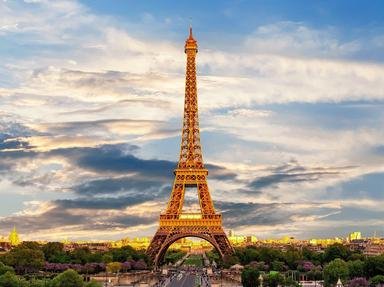Quiz Answer Key and Fun Facts
1. The national personification of France is a woman, often depicted in statues, as well as coins and stamps. By what name is she known?
2. Famous French kings such as Charles VII and Henry II were members of what royal house, which ruled France from 1328 to 1589?
3. What city in northeastern France, home to the magnificent Gothic cathedral where the kings of France were traditionally crowned, is also associated with the production of Champagne?
4. The gorgeous landscape of southern France was a constant source of inspiration for which major post-Impressionist French painter, who was a native of the region?
5. What minority language, closely related to Welsh, is spoken in a historic region and peninsula in northwestern France?
6. What is the name of the pretty, meringue-based French confections that have become globally popular in recent years?
7. Which of these famous French authors was responsible for the best-known versions of fairy tales such as "Cinderella" and "Sleeping Beauty"?
8. The Camargue, a large wetland region in the delta of the River Rhône, is known for an ancient, indigenous breed of what domestic animal?
9. What French perfume house, one of the oldest in the world, created iconic fragrances such as "Mitsouko", "Shalimar", and "Samsara"?
10. What beautiful, talented French actress won an Academy Award for Best Supporting Actress for her performance in the 1996 film "The English Patient"?
Source: Author
LadyNym
This quiz was reviewed by FunTrivia editor
trident before going online.
Any errors found in FunTrivia content are routinely corrected through our feedback system.

